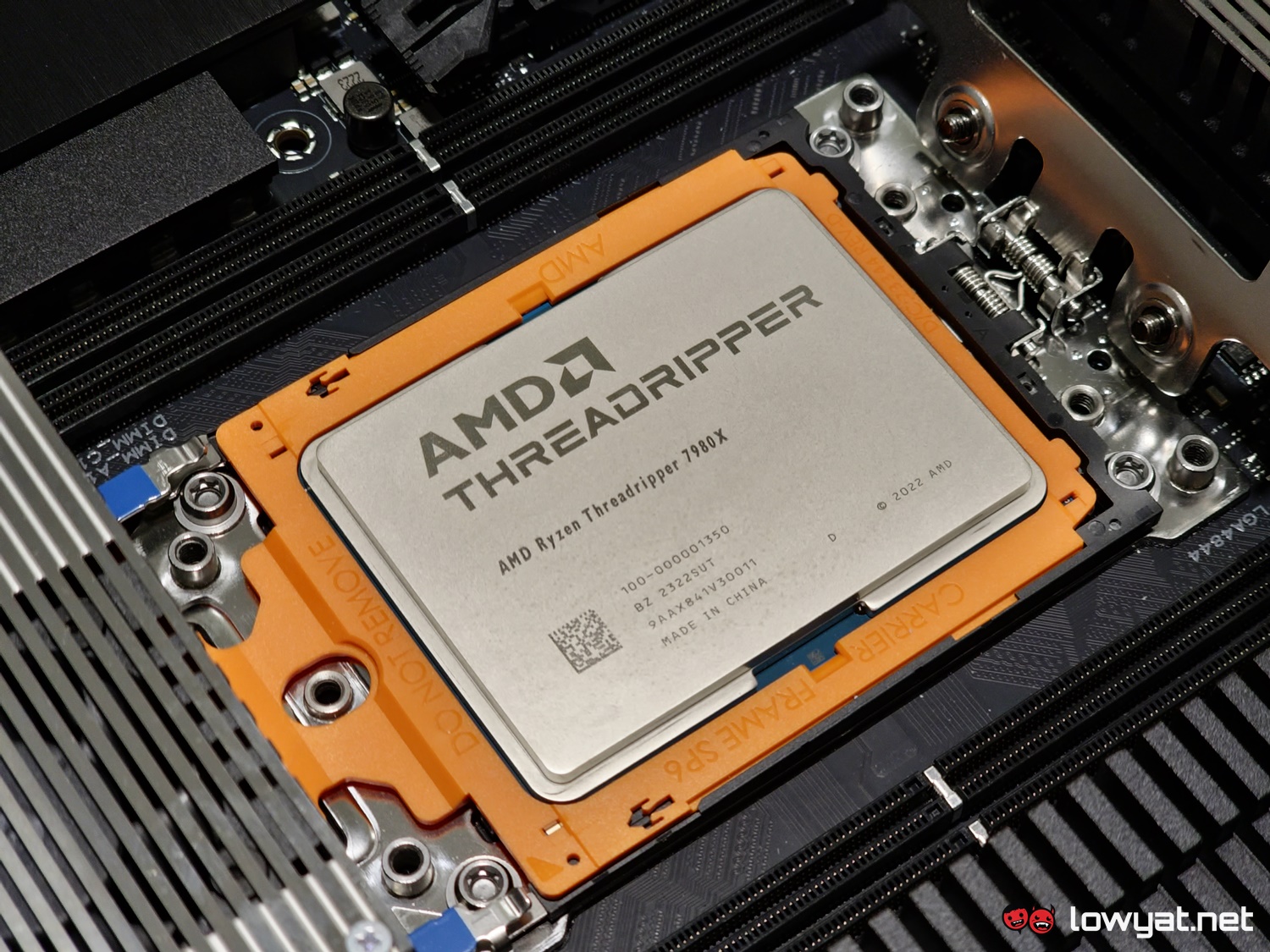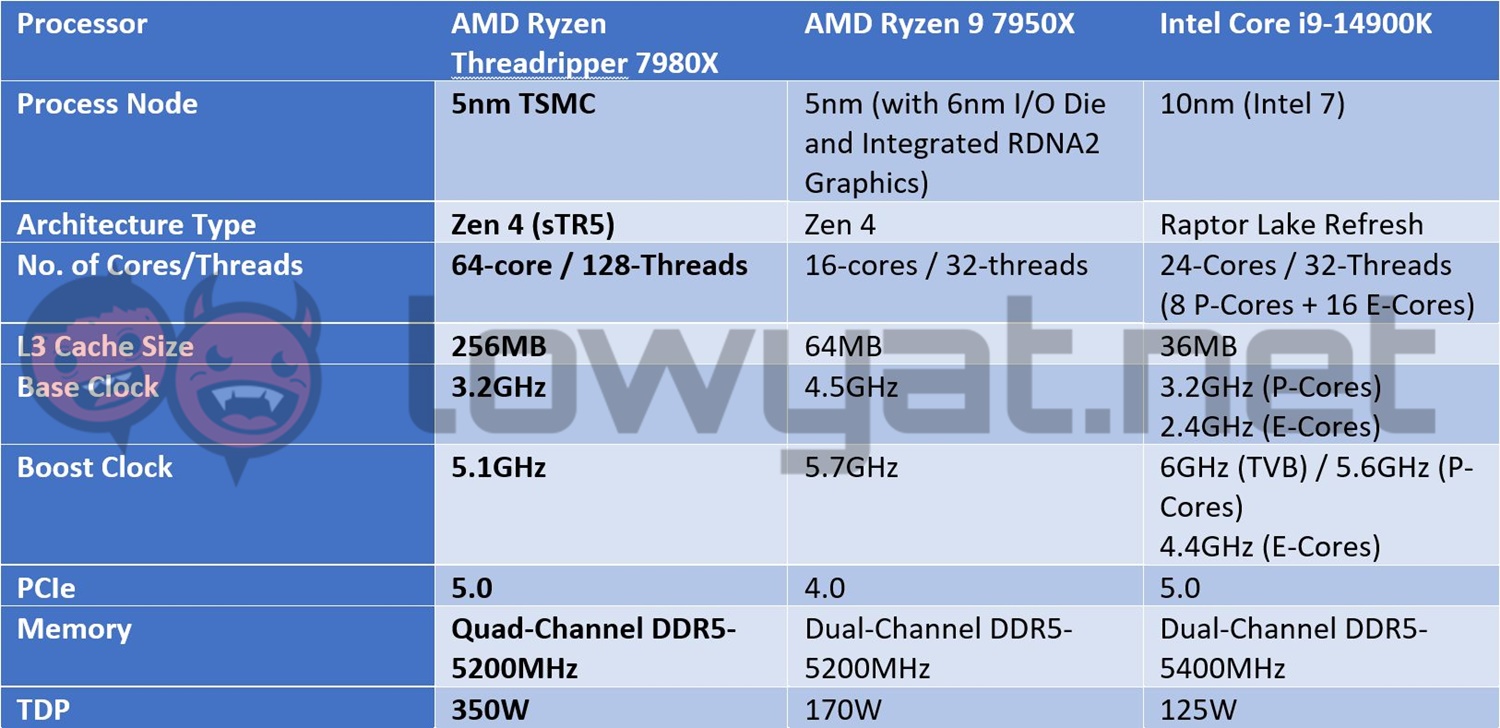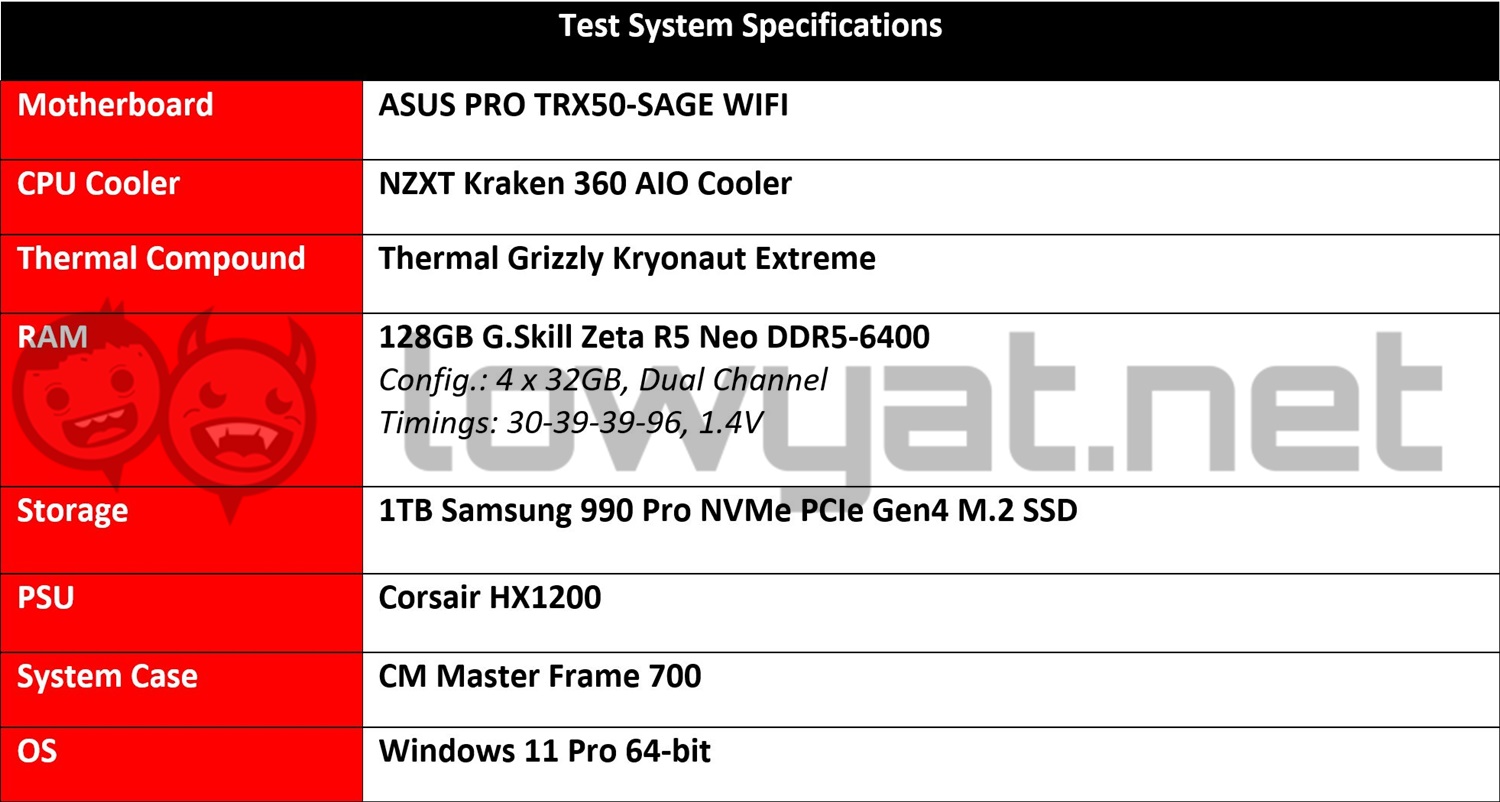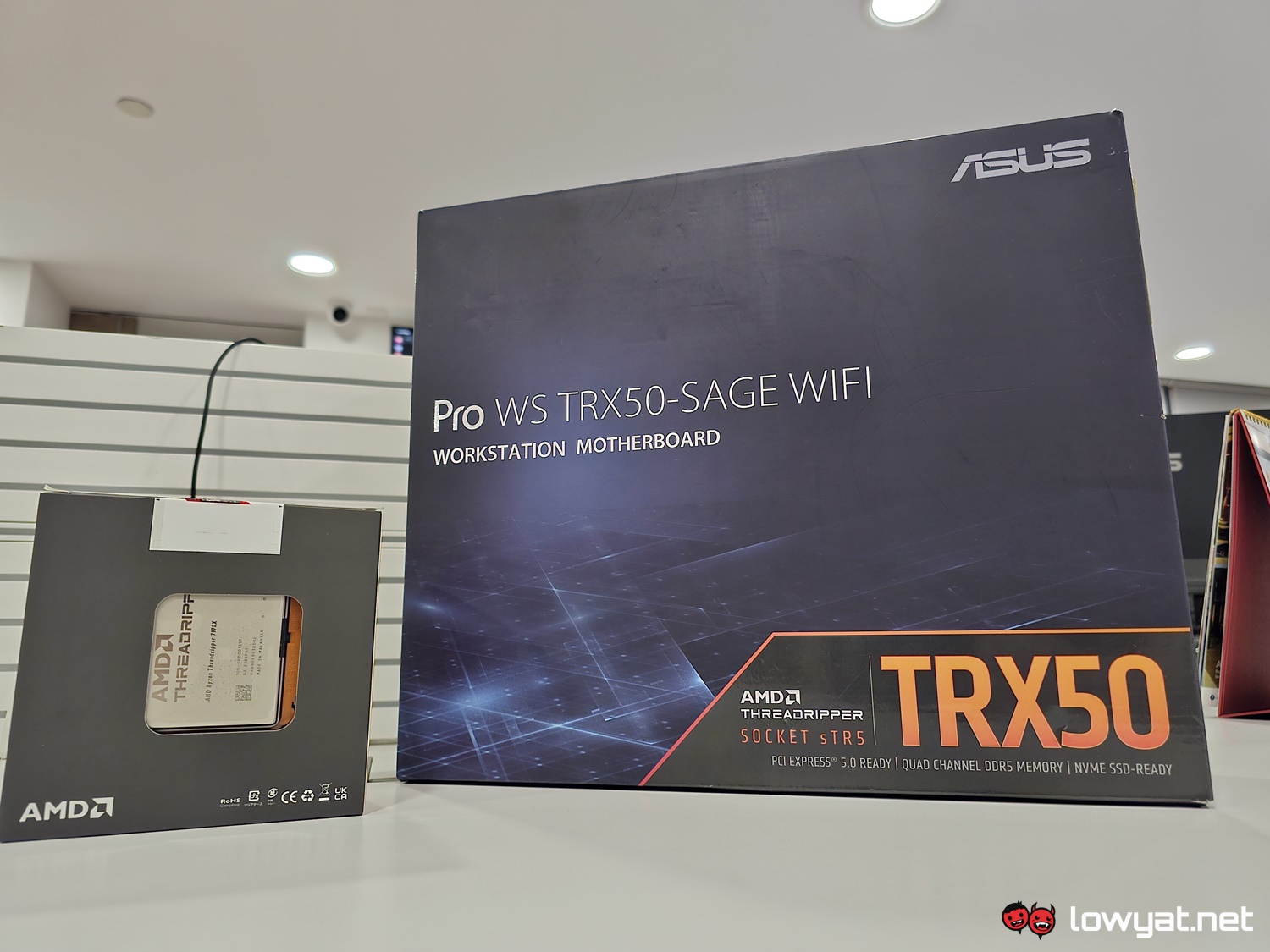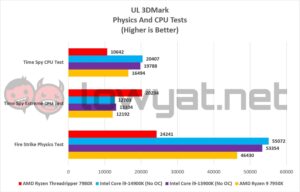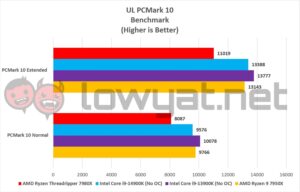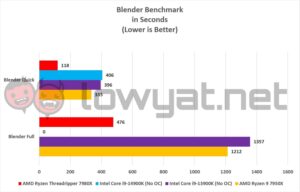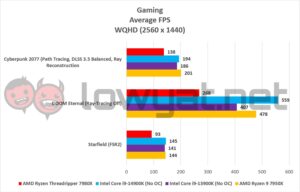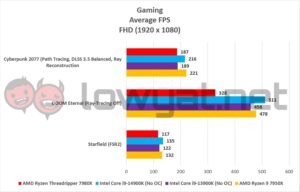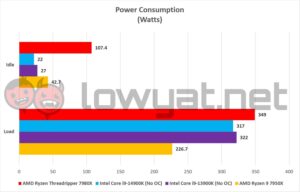After a lull that last through the pandemic and made everyone think that AMD had perhaps quietly discontinued its HEDT Threadripper line, the chipmaker dropped a bomb on the entire world with the launch of its new Ryzen Threadripper 7000 Series, both for the Pro and no-Pro segments, the latter coming in three flavours: The 7980X, the 7970X, and the 7960X. On that note, AMD sent us the first two to take a look at but in this review, I’m looking at the king-of-the-hill in this range.
It’s been five years, more or less, since the last reviewed a Threadripper CPU from AMD. In fact, the last HEDT CPU that I reviewed was 2nd generation, the 2950W, and not to tell what you obviously know, but a lot has changed since then.
Specifications
Design

As I said, it’s been years since a Threadripper HEDT CPU has landed in my labs and in that time, a lot has changed with the enthusiast-level CPU lineup. Starting with the obvious: the migration to the latest Zen 4 architecture.
With that migration, it means that the 7980X gets pretty much the same deal being offered with the consumer segment Ryzen 7000 Series. Primarily, access to DDR5 memory modules, as well as PCIe 5.0. There are differences between the two systems, no doubt, chief among which is the insane core count that they possess.
In this case, the 7980X is the HEDT Threadripper CPU with the highest core count in the range, sporting 64-cores and 128-threads. Additionally, it supports quad-channel DDR5-5200MHz memory, and up to 48 PCIe 5.0 lanes or 88 usable PCIe lanes. Granted, that’s not whole lot when you consider that the PRO WX Series Threadrippers support up to 128 PCIe 5.0 lanes, but 48 lanes is plenty.
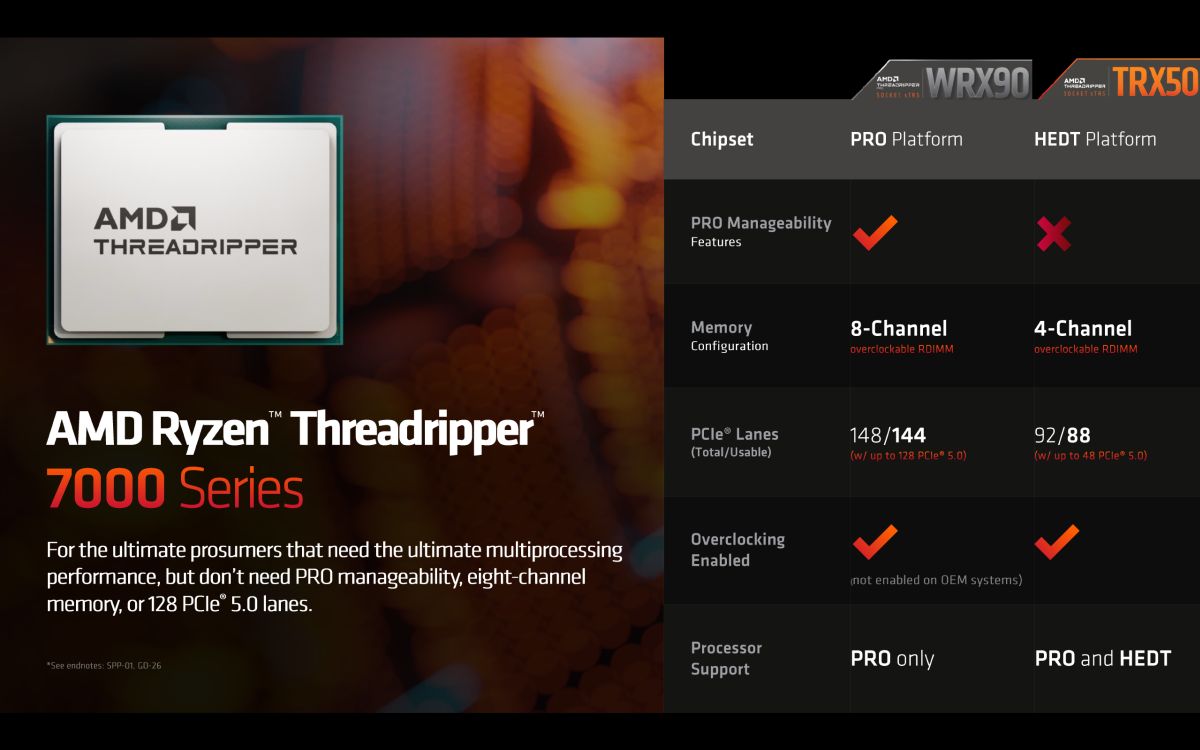
Pulling over to the side for a bit, even the packaging of the new Ryzen 7000 Series has changed or dumbed down, to be more precise. Instead of a glorious hard plastic enclosure that used to announce their glorious purpose, the new packaging is identical to the way AMD ships out their non-HEDT Ryzen processors. I’ll say this: it’s a clever bit of ecological conservations, and you still get all the extras needed to install and affix a CPU cooler, plus the sticker that tells the world that desktop is powered by pure Threadripper 7980X fuel.
Testbench
Seeing as this is a Ryzen Threadripper system, AMD was gracious enough to provide me with a full kit, more or less, for the duration of testing out both the 7980X and 7960X. So, the motherboard on loan is a TRX50-SAGE WIFI from the ASUS Pro range. Again, the TRX50 is the chipset that caters specifically to the non-PRO Threadripper CPUs but should you be one of the fortunate souls to possess a Threadripper Pro WX 7000 Series CPU, it’s compatible. On top of that, the brand also provided us witha 360mm AIO cooler from the NZXT, as well as a whopping 128GB DDR5-6400 RAM from G.Skill.
Additionally, AMD sent over a BIOS update that we also applied to the chipset, so as to eliminate any possible bottlenecks and performance issues.
Benchmarks, Temperatures, and Power Consumption
As a productivity-based component, the Threadripper 7980X and its beastly number of cores – for the HEDT line. As I previously reported, the Threadripper that holds the title belt for the highest core count belong to the 7995WX. That processor alone has 96-cores and 192-threads – can easily double down on all the productivity tasks that I have on my list. On the Blender benchmark, the CPU took less than 10 minutes to complete the cycle and a little over a minute for the quick test.
In all three Cinebench tests, the 7980X was clearly posturing above the consumer-segment CPUs, outpacing them by miles on the benchmarks’ multi-core test. However, when it came to the single-core tests, the CPU was clearly lacking in the department and was running slightly slower than even an Intel 14th Gen Core i9-14900K.
Likewise, it’s a similar story when it comes to gaming with the 7980X. In both 1440p and FHD gaming, it was the lowest performing CPU there. Heck, it’s even getting outperformed by the Ryzen 9 7950X. On that note, even its performance in the more mainstream benchmarks, such as 3DMark and PCMark 10, were a bit surprising; I honestly expected it to blitz through the physics and CPU test for the former, but certainly wasn’t expecting it falter as significantly in the latter test.
The heat generation by the 7980X is actually impressive. Given the number of cores it houses, I was expecting temperatures exceeding the 100°C mark but no, the CPU actually peaked at 84.4°C sustained itself within that range during the stress testing process.
Conclusion
At this stage, the most important question anyone can ask about AMD and its Ryzen Threadripper range is “should I buy it?” and more importantly, should you splurge on the 7980X? As a productivity-based component, there is both concrete evidence and little doubt that this HEDT CPU absolutely shreds through the rendering tests in Blender and all three Cinebench benchmarks. But even more impressive? It’s maximum TDP of 350W is only ever so slightly higher than even the highest-end consumer CPUs that are currently available on the market.
As a gaming-centric processor, though, the 7980X will feel more like an overpriced piece of silicon, even for consumers that eventually obtain the processor, it will undoubtedly and purely be for the express purpose of bragging rights. In that case, I think you’d be better off taking the money you stashed aside for this Threadripper and getting either a Ryzen 7 7800X3D or Ryzen 9 7950X, and used the leftover to get a decent motherboard.
Follow us on Instagram, Facebook, Twitter or Telegram for more updates and breaking news.


